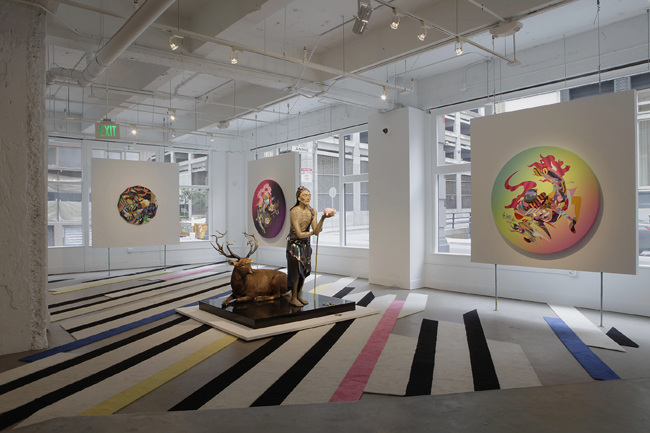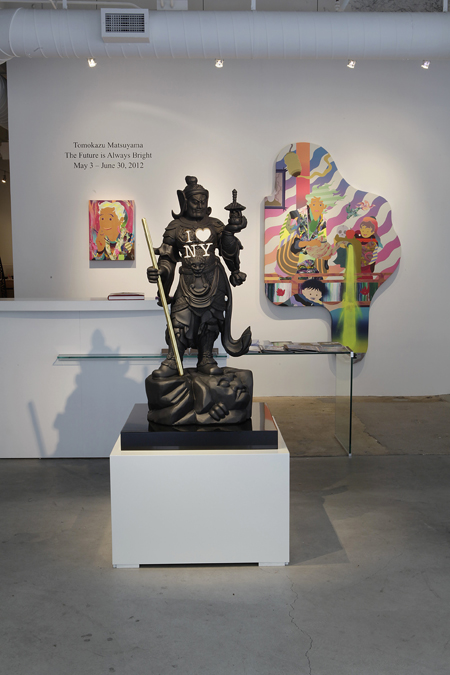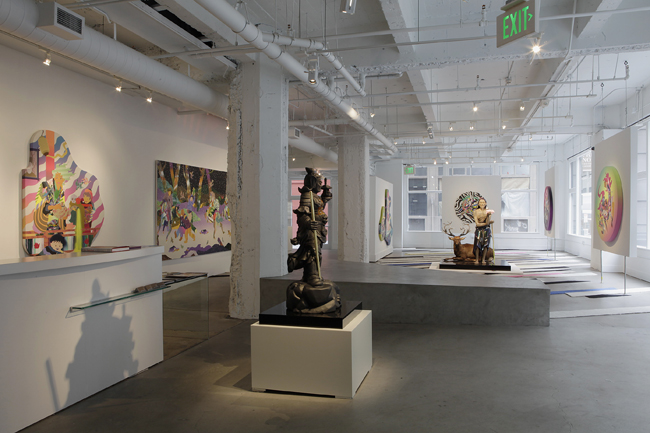May 3 — June 30, 2012



San Francisco — Tomokazu Matsuyama, “Matsu” for short, is an artist fascinated with how we live, particularly with the reciprocal bleeding of cultures into one another powered by new communications technologies. These technologies play on ubiquitous devices, allowing constant e-mails, texting, and updates to social media. Urban centers have transformed into a patchwork of intermingling cultural signifiers born of locales near and distant, sometimes in multiple languages and with clashing symbologies. We experience a new conflation of the local and the global, giving rise to a glocal community, something the artist himself experiences every day in his adoptive New York City. “Glocal” is a term coined in 1990 by Dr. Manfred Lange in Bonn, Germany that combines “global” with “local,” and in many manners is the fertile soil from which a polished and meticulous art is created by Matsu.
A chaotic fast-paced mix has become the artist’s everyday context. Out of this has grown the artists unflagging optimism, every setback only a pretext for a greater accomplishment, almost the quintessence of American optimism. In eponymous painting The Future is Always Bright, Matsu has found a body of pan-Asian superstitions and symbols associated with affluence, prosperity and good fortune, such as the carp or tortoise. For Money Talks, Matsu both pays homage to a 13th century Buddhist sage Basu Sennin and satirizes him, leaning on a yellow cane and holding a pink piggy bank shedding a rainbow of casino chips onto a black Perspex plinth. The sage is backed by a taxidermied deer with iridescent metallic antlers to match his beetle carapace robes; the deer is historically a symbol of the Buddha’s first “turning of the wheel of the Dharma,” his initial sermon in the deer park in Sarnath and in some ways the very first establishing of Buddhist ideas and liturgy.
The Future is Always Bright includes both large and small paintings in strange and amorphous shapes, rectilinear and curvacious, sculpture and installations that act upon the gallery’s architecture, disintegrating the boundaries between his pieces and the space through novel placement of diagonal patterned carpeting and the occupation of transitional corners and edges with small objects.
